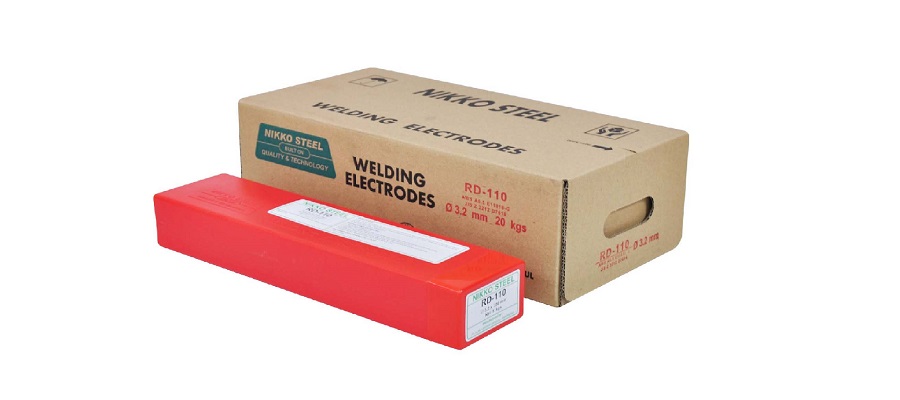BASIC LOW HYDROGEN ELECTRODE FOR WELDING HIGH TENSILE STEELS WITH A MINIMUM UTS 750 N/mm2
RD-110

CLASSIFICATION
AWS A5.5 E11016-G | EN ISO 18275-A E 69 3 ZMn1.5NiCrMo B | JIS Z 3212 D 7616
PRODUCT DESCRIPTION
The design emphasis of the chemically basic flux is engineered to ensure the optimum weld metal properties demanded by the specification are fully met. The basic flux containing the appropriate alloying elements but minimal iron powder, is extruded onto a high purity ferritic core wire and bound with a blend of silicates that ensure both coating strength and a coating resistant to subsequent moisture absorption
WELDING FEATURES OF THE ELECTRODE
The chemical nature of the flux together with its controlled coating factor allows the electrode to be used at relatively low amps. This factor together with the fairly
fluid but quick freezing slag facilitate vertical up welding including controlled penetration root runs. Overall the arc is very stable, slag detachability is good, fillet welds are slightly convex and metal recovery is some 98% with respect to weight of the core wire.
APPLICATIONS AND MATERIALS TO BE WELDED
For welding high tensile steels including quench and tempered low alloy types particularly when good notch toughness is required, either as welded or after
PWHT (500-550 ºC). Particular steels include US Navy HY100 - QN and OS690 cast. ASTM A487 Grades 4B, 4D and 6A cast BS970 Grades 709M40 (EN19)
WELDING AMPERAGE AC and DC
OTHER DATA
Electrodes that have become damp should be re-dried at 150oC for 1 hour